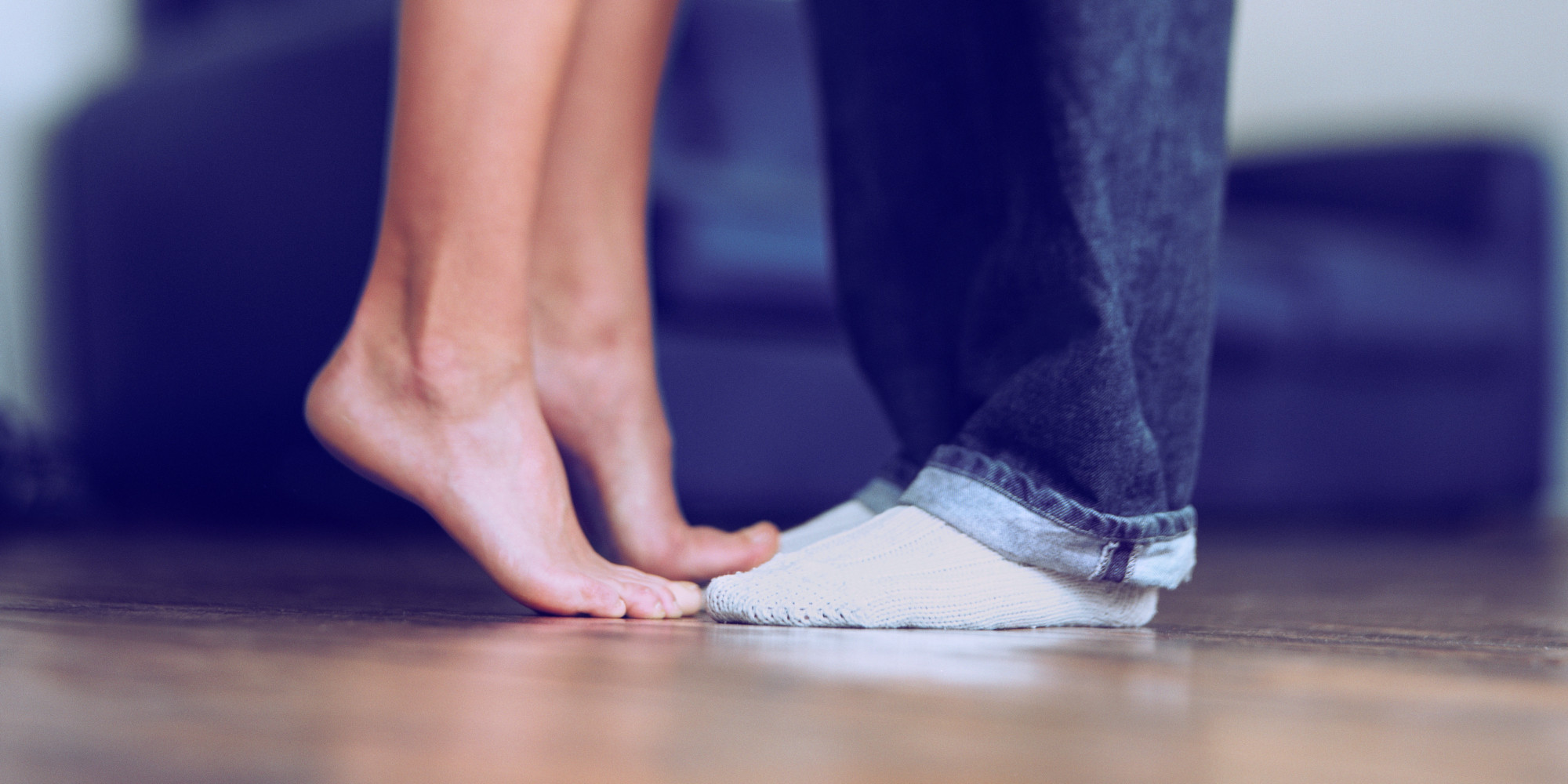Ladies Versus Men’s Foot Problems – FootSurgon.org
Ladies Feet
Updated 2/2/2015 IJR NEWS
Ladies are a lot more prone to specific foot troubles compared to guys, generally from years of walking in narrow-fitting footwears that press the toes and from high-heels that cramp the forefoot and posture dangers for arc and ankle joint troubles.
Foot and ankle joint issues typically experienced by women:.
Morton’s Neuroma– a thickening of nerve cells in the sphere of the foot resulting from compression and inflammation of the nerve, such as from wearing shoes that have a conical toe box, or high-heeled shoes that cause the toes to be compelled into the toe box.
Bunions– start with a leaning of the huge toe, gradually transforming the angle of the bones for many years and gradually generating the particular bump. They are most commonly triggered by an inherited flawed mechanical structure of the foot. Although both males and females can obtain bunions, the shoes used by ladies in some cases make the deformity get gradually worse.
Heel Pain and Plantar Fasciitis– is usually created by plantar fasciitis, although it might also be because of other reasons. Although faulty foot framework is the most typical source of plantar fasciitis, in females it may result from using non-supportive footwears such as flip-flops and ballet flats.
Ankle Sprain– While any individual could sprain an ankle, women are specifically susceptible to this injury when using high-heeled shoes (particularly on slippery areas), platform-soled footwears, or other improper shoes.
Foot Health Facts for Men.
Men’s feet
Men’s ankles and feet take a whipping, with works that typically require lengthy hours standing or strolling, and pastime including operating and leaping. However men often overlook foot and ankle joint issues up until discomfort begins reducing them down. It’s crucial for males to recognize that discomfort is not typical, and most foot and ankle joint conditions are simpler to deal with when diagnosed early.
Foot and ankle joint issues frequently experienced by men:.
Ankle joint Sprain – Participating in sporting activities tasks is one means men could acquire a sprained ankle joint. However also daily activities such as strolling on an uneven surface or slipping on an icy pavement could produce the agonizing stretching or tearing of the ankle tendon. If an aged strain wasn’t completely rehabilitated, the ankle joint could continuously obtain sprained, leading to persistent ankle weakness.
Hallux Rigidus – While some foot types are a lot more prone to obtain this condition, which is an unpleasant stiffening of the large toe joint, it could also be reason by overuse. Golf enthusiasts could develop it as a result of the motion of the foot throughout the follow-through of the swing, and various other men may have tasks that increase the tension on the big toe, such as those requiring frequent stooping or crouching.
Common Disorders of the Achilles Tendon – Tendonitis and tendonosis of the Achilles tendon are normally induced by an unexpected boost of a recurring task. Engagement in sports, particularly by those who are less conditioned and take part in sports just on weekends, places one at high danger for creating ailments of the Achilles tendon. These problems are additionally common in males whose work places anxiety on their feet and ankle joints, such as workers.
Toe and Metatarsal Fractures (Broken toes) – Some individuals state that “the physician cannot do anything for a broken bone in the foot.” This is generally not real. In truth, if a broken toe or metatarsal bone is not dealt with properly, serious issues may establish.
Shoe design is the most researched extrinsic factor for foot and ankle injuries in ladies. Research shows, nonetheless, that females’s feet are not just smaller sized variations of guys’s feet.
“Aesthetic prosthetic” by Susan Kingsley.
Understudied differences in foot structure, muscle mass toughness, ligament indifference, and proprioception are all intrinsic aspects that can initiate a predisposition for discomfort and injury in females. Little attention, however, has actually been offered to innate physical distinctions in man and female foot structure.
A research study by Wunderlich and Cavanagh checking out lower limb and foot measurements of approximately 300 guys and 500 women in the U.S. Army concluded that biologic distinctions already existing in between male and female feet and legs. They noted considerable distinctions in arc form, dimension of the lateral side of the foot, terrific toe, and sphere of the foot.
Differences expand beyond the foot.
Based on a report by Fessler and partners, guys have greater foot length-to-body elevation ratios compared to girls. As a result, the differences in foot length in between males and women is typically proportional to stature. Research studies have shown that distinctions in the framework and dimension of the foot bones (specifically by dimensions of metatarsal, phalangeal, calcaneus, and talus bones) have actually permitted forensic recognition of sex.
Along with distinctions in skeletal structure, research studies by Eckstein and associates utilized magnetic vibration imaging to observe differences in cartilage material in between males and women, including quantity, area of the joint, and cartilage material density. Although the initial function of the study was not to identify sex differences, statistically significant disparities were kept in mind. For example, the research study showed that women had a 20 percent to 25 percent lower volume and surface location in the subtalar, talonavicular, and ankle joints and approximately 16 percent thinner cartilage.
Women and men likewise have substantial distinctions in gait. Studies by both Kerrigan and associates and Sepic and associates have actually shown that plantar flexion and array of motion of the ankle are better in women, possibly as a result of better indifference in female tendons. Numerous researches have actually noted greater ankle and knee indifference worths in ladies.
Glass pantofles are for fairytale.
A suitable fitting, comfortable shoe rarely relates to trendy, stylish footwear in a lady’s globe. Unfortunately, the normal, a lot more fashionable high-heeled footwear with a slim toe box creates enhanced plantar tension and toe crowding, which can trigger bunions (hallux valgus), bunionettes, hammer toe, and even neuromas in serious instances.
Research studies show that 88 percent of females put on footwears too small for their feet and 70 percent were noted to have actually connected hallux valgus defect. National research studies reveal roughly 1 percent of all adults have hallux valgus, with an enhancing occurrance with age; although only 9 percent of 30-to- 60-year-olds have bunions, about 16 percent of people more mature than age 60 have them. Females are two to 4 times much more likely to have hallux valgus compared to men, most likely as a result of a combination of inherent architectural features and external shoes options.
In addition, the incidence of hammer toe is 4 to 5 times more typical in females. In 1991, roughly 209,000 bunionectomies, 210 hammer toe improvements, 66,500 neuroma resections, and 119,000 bunionette repair works were carried out.
Badly suitable shoes impact even more than merely feet. Shoes with a heel of 1.5 cents cents or greater boost knee torque with walking, which could be associated with the rise of knee osteoarthritis among females that favor higher-heeled footwears.
Many research studies have actually examined shoes in senior patients at the time of an autumn and have revealed that a high percentage of those which dropped were putting on pantofles. The extreme versatility of sandals and their absence of security are connected with a greater incidence of tripping and falls.
We have a long method to enter checking out innate differences in between the female and male foot. Limited study has been released on sex-related dimorphism of the foot and ankle joint; several of the researches only retrospectively identified structural distinctions to explain injuries unique to ladies. Numerous detectives have actually recommended that proprioceptive differences are somewhat responsible for ankle joint tendon injuries.
As expertise of sexual dimorphism and the one-of-a-kind health care requirements of females development, interferences that are associated with intrinsic differences, and also the extrinsic aspects of the foot and ankle joint, will be crucial to supply proper precautionary and restorative look after ladies.
Judith F. Baumhauer, MD, is instructor of orthopaedic surgical procedure at the University of Rochester School of Medicine. She can be reached at judy_baumhauer@urmc.rochester.edu.
Shoe style is the most researched extrinsic element for foot and ankle joint injuries in women. Research shows, nevertheless, that ladies’s feet are not simply smaller sized variations of males’s feet.
A research study by Wunderlich and Cavanagh examining lower arm or leg and foot measurements of around 300 men and 500 ladies in the U.S. Army concluded that biologic distinctions existed in between man and female feet and legs. They noted significant distinctions in arc shape, dimension of the lateral side of the foot, wonderful toe, and round of the foot. Restricted study has actually been posted on sexual dimorphism of the foot and ankle; many of the research studies simply retrospectively identified anatomic differences to describe injuries unique to females.


Ladies versus Men’s Foot Problems — that’s the headline for six weeks here at “world class journalism” , I gotta tell you, some of your articles are the best I have seen
I love “FootSurgon.org” — My local newspaper could sure use a presentation like this website in order to show stellar journalism. I understand the recent changes you have went through and I am loving that this website is getting back yo its standard that it was built on.